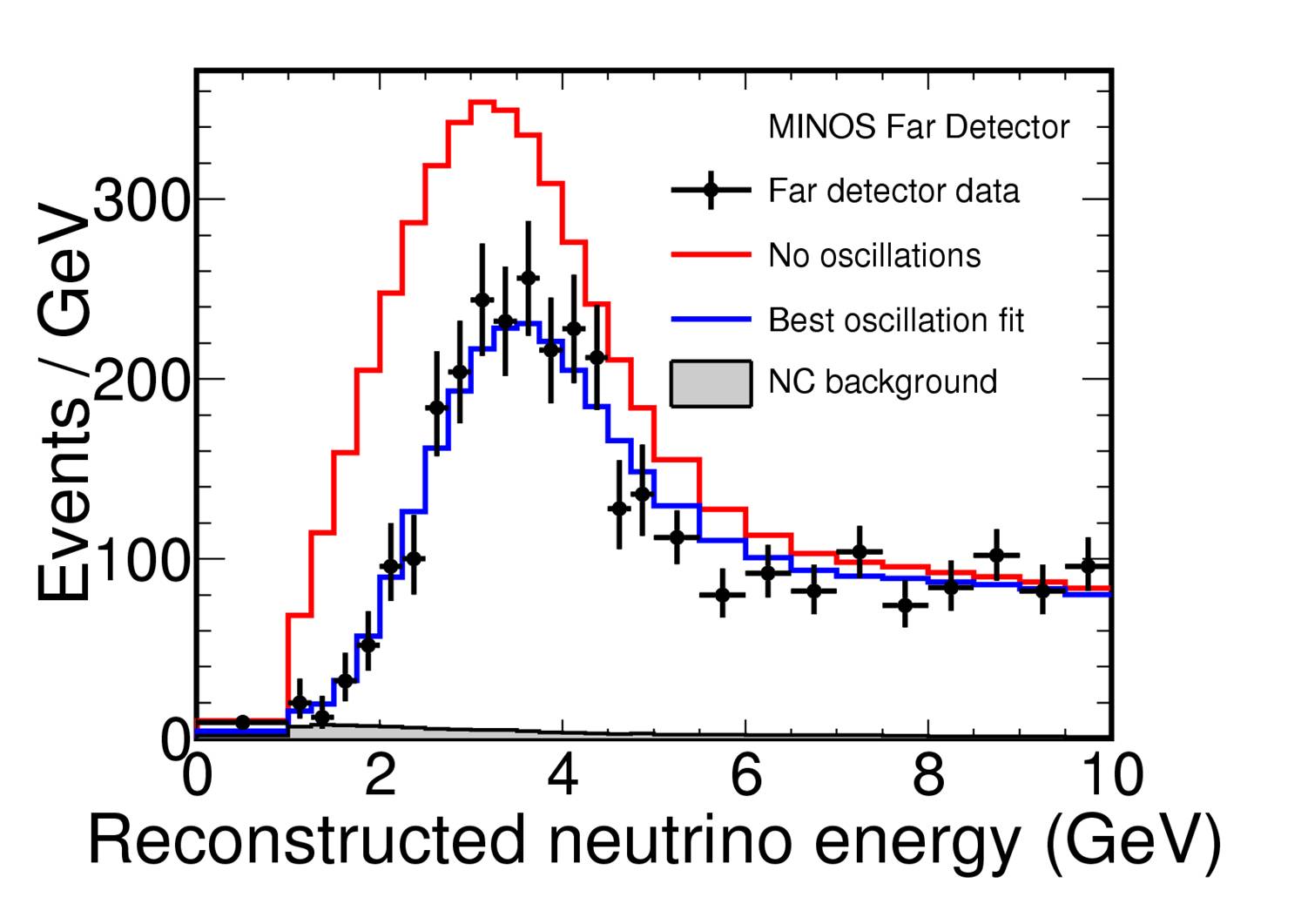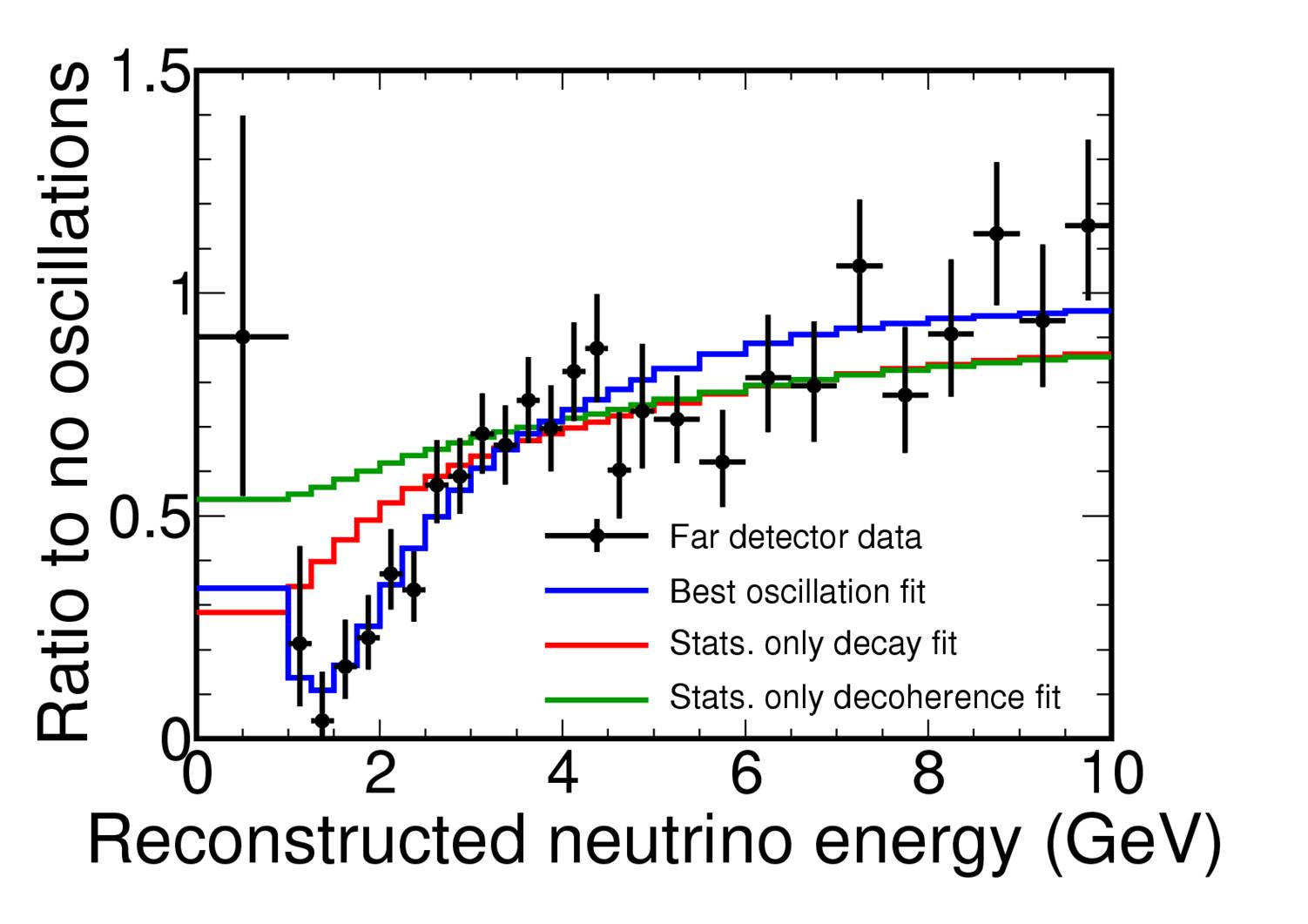Main Injector Neutrino Oscillation Search: Experimental Results

MINOS observation confirms that neutrinos do in fact oscillate, that is change from one neutrino type to another. In the graph to the left we see the number of muon neutrino events in the far detector for each neutrino energy level. The red line indicates the number of events we would expect to see if there were no oscillation. The data indicates a lot fewer muon events are occuring than the red line would predict, this deficit is accounted for by oscillation. The expected number of events, taking oscillation into account is represented by the blue line.

The graph to the right indicates the likelihood of a muon neutrino, with a particular energy, reaching Soudan Lab with its neutrino identity intact. The blue line indicates the expectation of oscillation, the red and green lines represent alternative explanations. The alternative explanations are excluded by the data while the oscillation hypothesis is supported.
Though it may be hard to see, this is consistent with the graph above. The greatest deficit of neutrinos above is around 2 GeV and very few neutrino are missing around 10 GeV.


